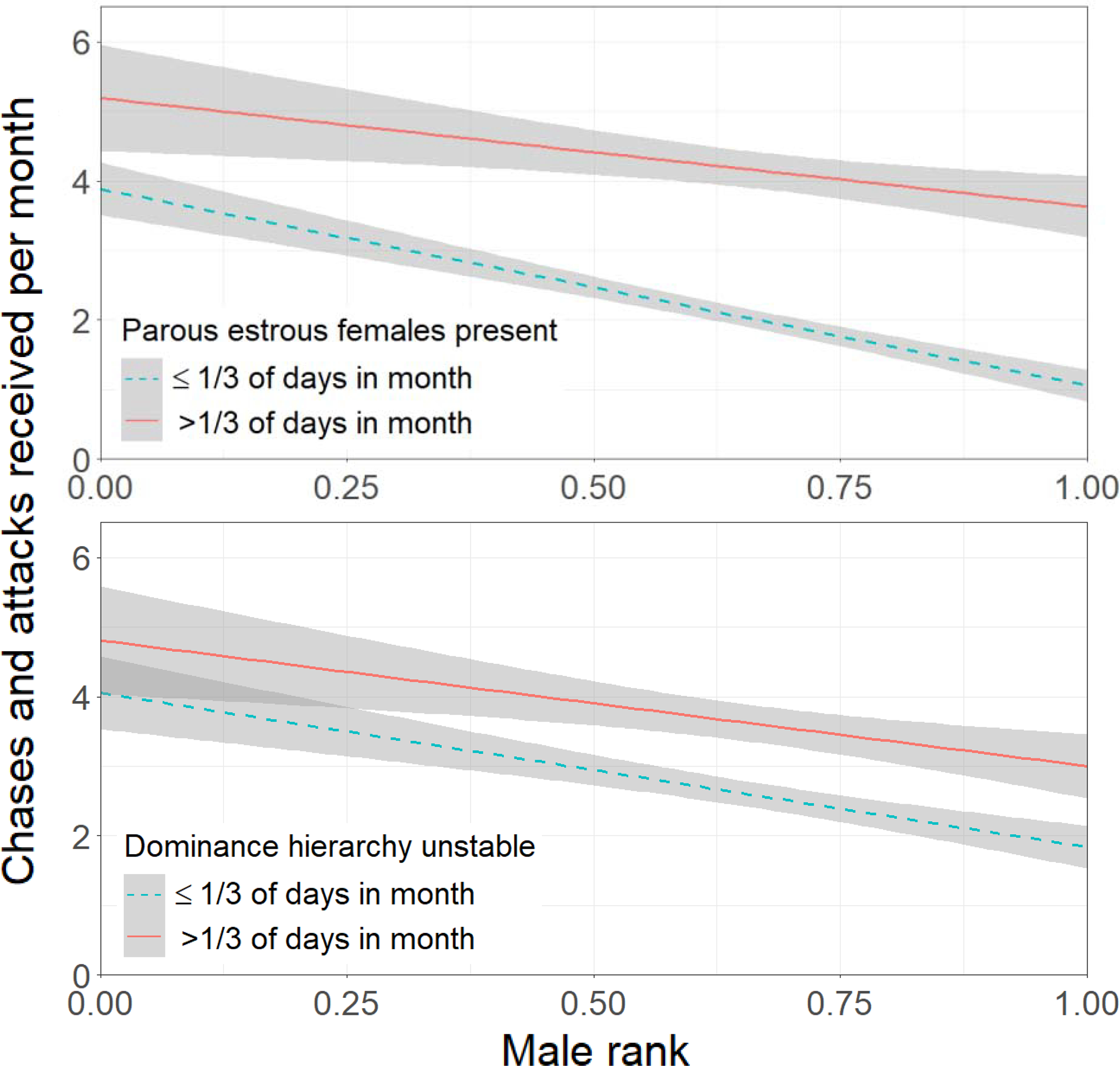Figure 4.

Monthly aggression received by male chimpanzees by rank (n=743 months, 17 adults). Across contexts, high-ranking males received less aggression than low-ranking males. Males received more aggression in months when they associated more with parous estrous females (top panel) and in months with more days of instability in the dominance hierarchy (bottom panel). Parous estrous females had a greater effect on the amount of aggression received by higher-ranked males. Counts were based on a mean monthly observation time of 126 hours. Although instability and presence of estrous females were continuous variables in the models, for visualization purposes they are shown here as categorical variables. The shaded areas indicate 95% confidence intervals. (Figure S3 plots the same data showing individual points.)
